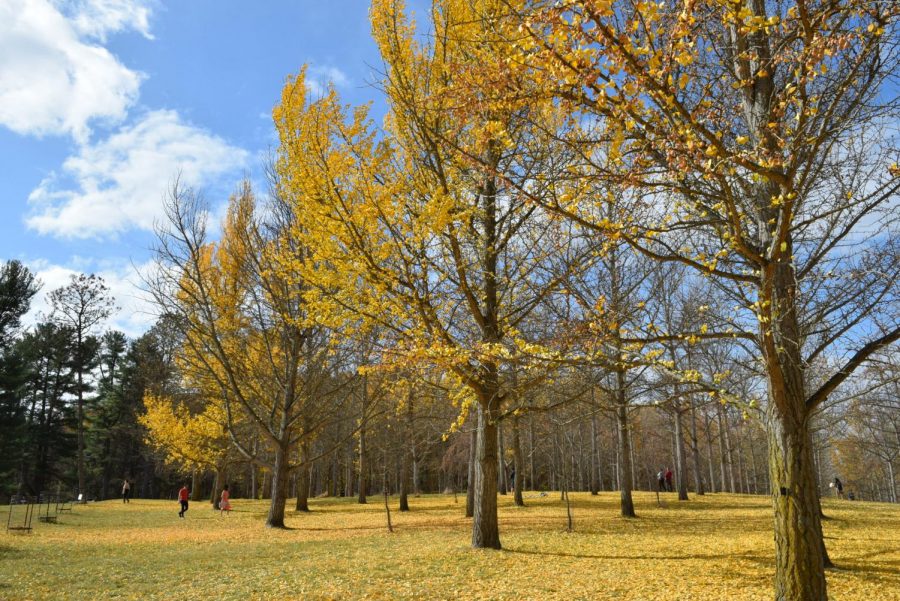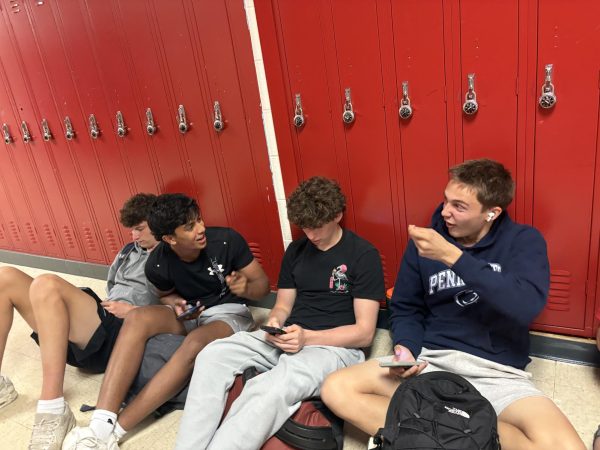Beautiful Gingko Grove stinks up DMV
Vibrant yellow ginkgo leaves cover the ground at the Ginkgo Grove in Virginia.
With over 300 trees, Blandy’s Ginkgo Grove in the State Arboretum in Virginia is one of the largest public ginkgo groves in America. These Gingko trees are a vibrant yellow, and the colorful landscape is visible even from miles away.
Late October is the season that leaves turn from green to gold, then drop, forming a lush, golden carpet under the trees. An annual GinkgoFest is also held in late October, celebrating the glorious ginkgoes as they faithfully turn to gold in one of nature’s most spectacular autumn shows. After parking, visitors take a scenic 10 minute walk to the grove. People visit with family or friends, taking pictures in the beautiful landscape as the bright yellow makes for a perfect backdrop. Visitors are allowed to enjoy the grove, observe wildlife, take photos, and walk their dogs while leashed, but are prohibited from collecting fruit, breaking branches, climbing trees, flying drones, or parking outside of designated areas.
Ginkgo is dioecious, which means that male and female flowers are born on separate trees. The female trees produce fruit; a fleshy, brownish-orange about the size of a cherry. The large numbers of fruit drop from the tree, not only making a mess, but the squashed fruit unleashes a rather unpleasant odor. Depending on the person, some describe it as similar to rotten cheese or rancid butter, and others compare it to feces or vomit. Whatever the case, most people who plant ginkgo trees choose to plant male trees. But Gingko fruit is actually edible. Most people eat the nut inside the fruit (if you can get past the nasty smell).
The ginkgo tree is also often described as a “living fossil.” Ginkgoes witnessed the rise and fall of the dinosaurs and were once widespread across what is now Asia, Europe, and North America. Ginkgoes declined rapidly 65 million years ago for reasons that scientists are still working to understand, and there is only one species of ginkgo left on earth, Ginkgo biloba, derived from the ginkgo trees that survived as a small relic population in China.
We can enjoy this Ginkgo Grove today thanks to a scientific experiment dating back to the 1930s and 1940s. Dr. Orland E. White, Blandy Experimental Farm’s first director, wanted to know what proportion of a gingko’s seeds would develop into male vs. female trees. To test this question, Dr. White and his students planted an experimental ginkgo orchard at Blandy using seeds collected from a tree of the Grounds of the University of Virginia in Charlottesville. Today, this experimental ground is open to the public and there is no admission fee to enter Blandy Experimental Farm/The State Arboretum of Virginia or to see the ginkgoes.
Your donation will support the student journalists of Thomas S. Wootton High School. Your contribution will allow us to purchase equipment and cover our annual website hosting costs.
Emma is a 2023 graduate.







